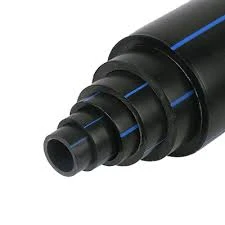Dec . 04, 2024 19:49 Back to list
hdpe plate
Understanding HDPE Plates An In-Depth Look
High-Density Polyethylene (HDPE) plates have become increasingly popular across various industries due to their unique properties and versatility. This article explores the characteristics, applications, advantages, and manufacturing processes of HDPE plates, helping readers understand why they are an excellent choice for many projects.
What is HDPE?
HDPE, or High-Density Polyethylene, is a thermoplastic polymer made from petroleum. It is known for its high strength-to-density ratio, making it extremely durable and resistant to impact, moisture, and various chemicals. HDPE is often used in products like plastic bottles, pipes, and containers, but its application extends to the production of sturdy and reliable plates.
Characteristics of HDPE Plates
1. Durability HDPE plates are known for their toughness and long lifespan. They are resistant to dents, scratches, and substantial mechanical stress, making them ideal for heavy-duty applications.
2. Chemical Resistance One of the standout features of HDPE is its resistance to a wide array of chemicals. This makes HDPE plates suitable for environments where they may come into contact with corrosive substances, including acids, bases, and solvents.
3. Water Resistance HDPE is inherently moisture-resistant, making HDPE plates excellent for applications in wet or humid conditions. They do not absorb water, which prevents warping, swelling, or degradation.
4. Lightweight Compared to metal plates, HDPE plates are much lighter, simplifying handling and installation. This characteristic is particularly beneficial in projects where weight is a critical consideration.
5. Eco-Friendly HDPE is recyclable, and many manufacturers prioritize sustainability by producing plates that can be repurposed after their useful life, reducing landfill waste.
Applications of HDPE Plates
HDPE plates are utilized in various fields, including
1. Construction and Landscaping Due to their durability and resistance to environmental effects, HDPE plates are often used for outdoor furniture, garden beds, and landscaping features.
2. Industrial Applications HDPE plates are suitable for manufacturing parts, components for equipment, and protective barriers in warehouses. Their resistance to wear and tear makes them invaluable in heavy-duty settings.
hdpe plate

3. Marine Use The water-resistant properties of HDPE make it ideal for marine environments. It is commonly used for dock materials, boat parts, and other maritime applications.
4. Food Industry HDPE plates are safe for food contact and often find use in food processing and packaging. They are non-toxic and can withstand cleaning and sanitizing processes effectively.
Advantages of HDPE Plates
- Cost-Effective While the initial investment might be higher than some alternatives, the longevity and durability of HDPE plates lead to savings over time. Their resistance to wear means less frequent replacements.
- Versatility Available in various sizes, thicknesses, and colors, HDPE plates can be customized for a wide range of projects, making them suitable for specific needs across different industries.
- Easy to Work With HDPE plates can be easily cut, welded, and machined, allowing manufacturers and builders to create customized solutions effortlessly. This ease of fabrication facilitates quick project turnaround.
Manufacturing Process of HDPE Plates
The production of HDPE plates involves several steps
1. Polymerization The first step is the polymerization process, where ethylene monomers are linked together to form high-density polyethylene.
2. Extrusion The polymer is heated and formed into sheets through an extrusion process, producing large, flat sheets of HDPE.
3. Cooling and Cutting After extrusion, the plates are cooled and cut into desired dimensions, ready for shipping or further processing.
4. Quality Control Throughout the manufacturing process, rigorous quality control ensures that the plates meet industry standards and specifications.
Conclusion
HDPE plates represent a robust and versatile material that meets the demands of various industries with excellence. Their unique properties, combined with environmental advantages and ease of use, make them a preferred choice for many applications. Whether in construction, food processing, or industrial settings, HDPE plates offer a reliable and sustainable solution for modern manufacturing and design needs. As industries continue to innovate, the role of HDPE plates will undoubtedly expand, solidifying their status as an essential material in today's marketplace.
-
High-Quality PPR Pipes and Fittings Durable ERA PPR & PVC PPR Solutions
NewsJul.08,2025
-
Black HDPE Cutting Board - Durable, Non-Porous & Food Safe HDPE Plastic Cutting Board
NewsJul.08,2025
-
High-Quality CPVC Panel Durable HDPE & PVC Panels Supplier
NewsJul.08,2025
-
Double PE Welding Rod Supplier - High Strength, Durable & Versatile Welding Solutions
NewsJul.07,2025
-
High-Quality PVC-O Pipe Supplier Durable 75mm PVC Pipe & Connections Leading PVC Pipe Company
NewsJul.07,2025
-
HDPE Drainage Pipe Supplier – Durable & Corrosion-Resistant Solutions
NewsJul.06,2025

